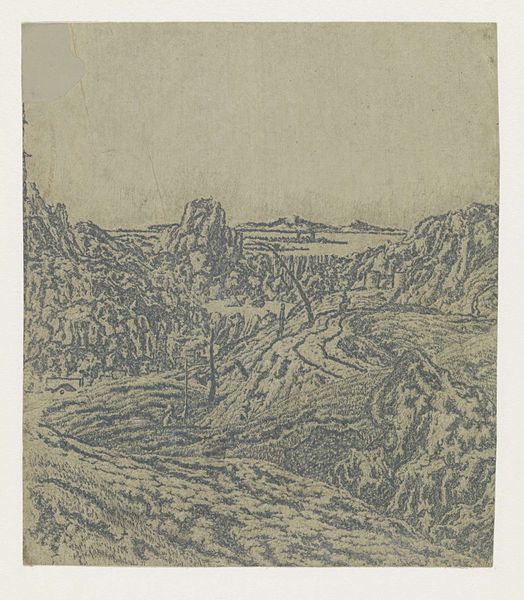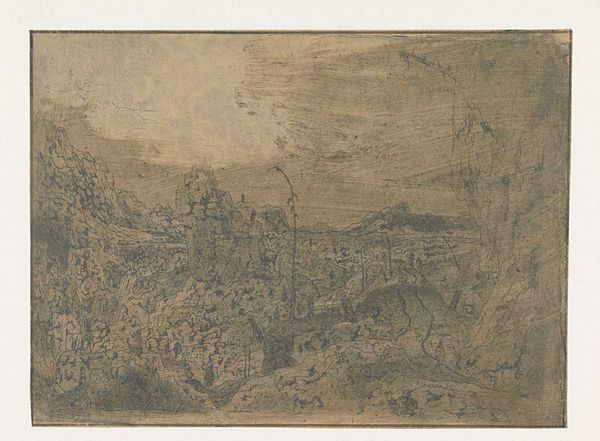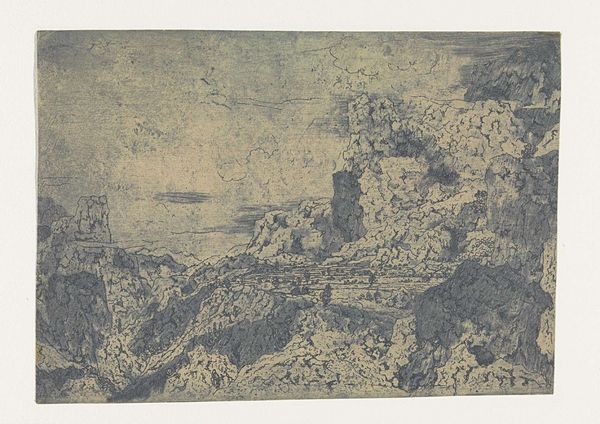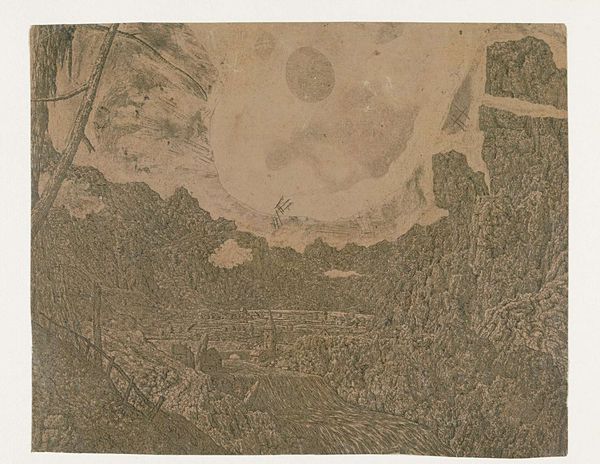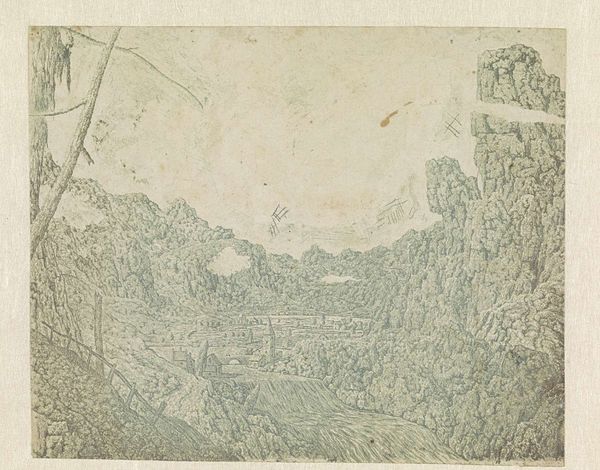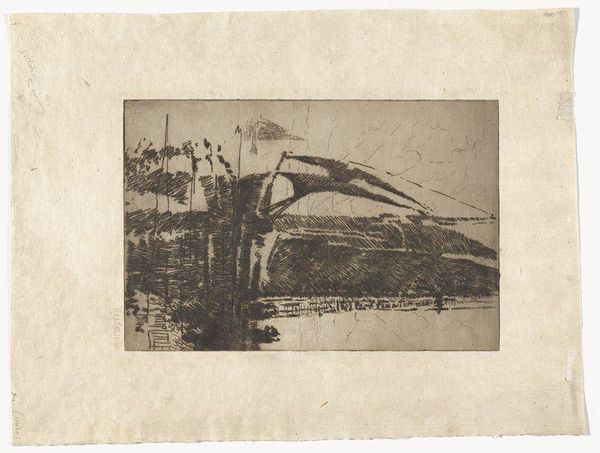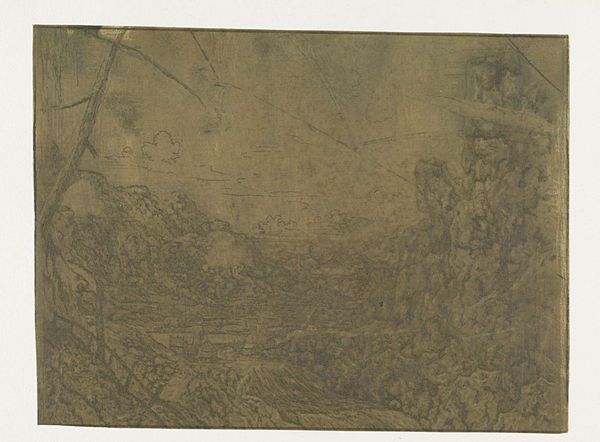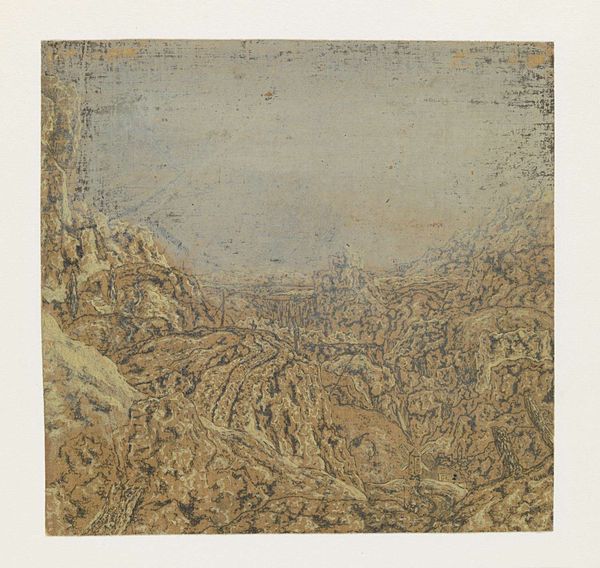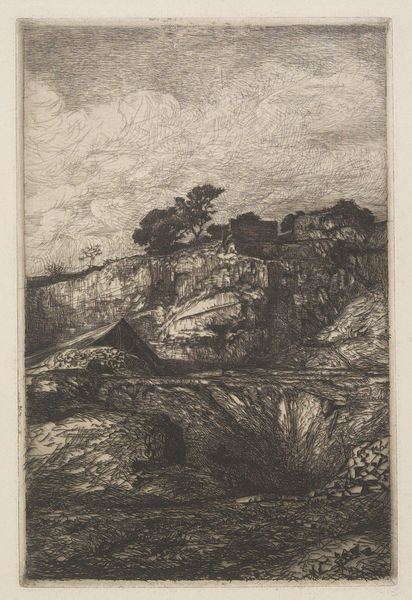
print, etching
#
baroque
# print
#
etching
#
landscape
Dimensions: height 167 mm, width 153 mm
Copyright: Rijks Museum: Open Domain
Curator: We're standing before Hercules Segers's "Rocky Landscape with a Gorge, First Version," an etching created circa 1625 to 1630. Editor: Immediately, I'm struck by the palpable sense of isolation. The color is somber and the landscape feels otherworldly, even forbidding. Curator: That emotional impact, I believe, is precisely what Segers was after. Consider the symbolism inherent in such a stark, unforgiving environment. The barren rocks, the implied struggle for survival… these visuals would deeply resonate with viewers, calling forth archetypal themes of endurance and fate. Editor: Perhaps. But I'm more intrigued by how Segers achieved this effect materially. Look at the rough, uneven lines, the varying depths of the etching. It's clear he wasn’t just interested in representing a landscape. It seems like he wanted to actively participate in shaping the visual and tactile qualities of the print. He was deeply engaged in the craft itself. Curator: Absolutely, and that tactile quality reinforces the primal feel. Note how that windmill nestles precariously at the bottom left. Its vulnerability emphasizes human dependence on larger forces, a theme consistent across various cultures who represent our small place in the cosmos. Editor: Agreed. The smallness of the mill emphasizes the grandness of the landscape, a sublime vision that only materials could properly evoke. How many different states did Segers pull this print through, continually reworking the plate? And what about the inks he used – where did he source them, how did he mix them to get these unusual tonalities? Curator: Segers did reportedly experiment extensively with printing techniques, altering colors, and even hand-coloring impressions, making each print unique. That almost obsessive approach makes sense if you think of the landscape itself as a metaphor for internal exploration, mirroring the twists and turns of the human psyche. Editor: I appreciate the connection between internal process and external landscape here. Perhaps Segers’ intense engagement with material reflected his attempts to uncover nature’s deepest secrets. It reminds us that even a seemingly desolate scene can hold a rich story, grounded in labor and raw matter. Curator: It invites a journey through not only landscape, but into a deeper reflection of our place within it. Editor: Absolutely. "Rocky Landscape" resonates beyond aesthetics and directs us to contemplate the intersection of skill and meaning embedded in such visual relics.
Comments
rijksmuseum about 2 years ago
⋮
Fragments of a ship can be discerned in the sky above the landscape. Segers cut the large plate with the ship into pieces and used them for three etchings of mountain landscapes.
Join the conversation
Join millions of artists and users on Artera today and experience the ultimate creative platform.
